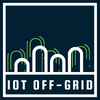Learning Objectives:
- Learn a host of areas in which IoT Sensors are deployed
- Why are these areas useful?

- Cold Chain Logistics: LoRaWAN temperature and humidity sensors can be used to monitor perishable goods during transportation, ensuring that they are stored under optimal conditions and reducing the risk of spoilage
- Food and Beverage Industry: The same temperature and humidity sensors mentioned previously can also be deployed to monitor food and beverage products during storage, transportation, and preparation, ensuring that they are safe for consumption.
- Noise Monitoring: LoRaWAN monitor sensors can be used to detect and monitor noise pollution levels in various environments, including urban areas and industrial sites. This data can be used to inform noise mitigation strategies and reduce the risk of hearing damage and other health impacts.
- Structural Health Monitoring: Monitor sensors can also be used to detect and monitor structural parameters such as vibration and strain, enabling early detection of structural damage and reducing the risk of structural failure.
- Pharmaceutical Industry: We can monitor the temperature of medications and vaccines during storage and transportation, ensuring that they remain effective.
- Smart Buildings: Temperature, light and monitor sensors can be used to monitor indoor environments, enabling building managers to optimize heating and cooling systems and reduce energy waste.
- Agriculture: LoRaWAN sensors of all kinds can be used to monitor the temperature of soil and crops, ensuring that they are grown under optimal conditions and reducing the risk of crop damage due to extreme temperatures.
- Medical Applications: Monitor medical equipment with temperature and pressure sensors, such as refrigerators and freezers, ensuring that medications and vaccines are stored under optimal conditions.
- Indoor Air Quality: LoRaWAN humidity sensors can be used to monitor the humidity level in indoor environments, enabling building managers to optimize HVAC systems and reduce energy waste. They can also help to prevent mold growth and maintain a comfortable environment for occupants.
- Industrial Applications: In industrial applications, we can use a host of different methods to monitor environmental parameters such as temperature, humidity, and air quality, helping to optimize processes and reduce waste.
- Automotive: LoRaWAN light and pressure sensors can be used in automotive applications to measure levels inside and outside of the vehicle, enabling the automatic alert or adjustment of headlights, tire pressure, etc.
- Safety and Security: Sensors can play an important role in safety and security applications to detect certain changes or potential threats and then trigger alarms or other safety measures when necessary.
- Retail and Commercial Applications: LoRaWAN light sensors can be used in retail and commercial applications to measure the light levels in different areas, enabling businesses to optimize their lighting systems and reduce energy costs.
- Building Management: Pressure sensors can be used in building management systems to monitor air pressure levels in HVAC systems, ensuring optimal air quality and reducing energy waste.
- Oil and Gas: Monitor pressure levels in pipelines and tanks, enabling early detection of leaks and reducing the risk of environmental damage.
- Environmental Monitoring: LoRaWAN gas sensors can be used in environmental monitoring systems to detect the presence of gasses such as carbon dioxide, nitrogen dioxide, and ozone, helping to monitor air quality and reduce health risks.
- Smart Water Management: Water quality sensors can be used in smart water management systems to monitor the quality of water in different parts of the distribution network, enabling utilities to detect changes in water quality and take corrective actions.
- Aquaculture: In a variety of aquaculture ecosystems we can monitor water quality. Some popular areas are in fish tanks and ponds, ensuring optimal living conditions for aquatic animals and flora.
